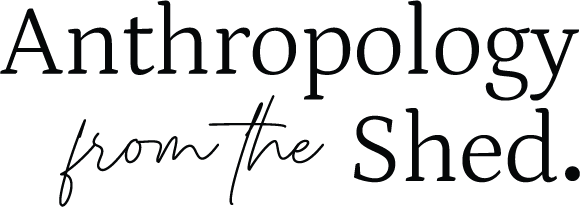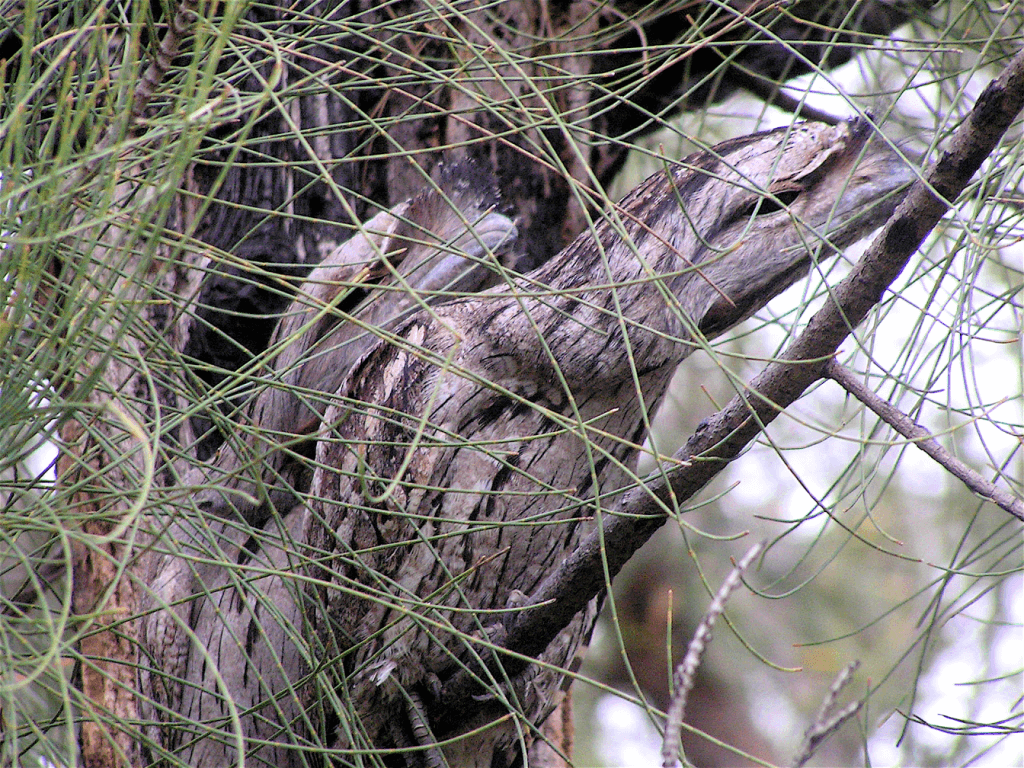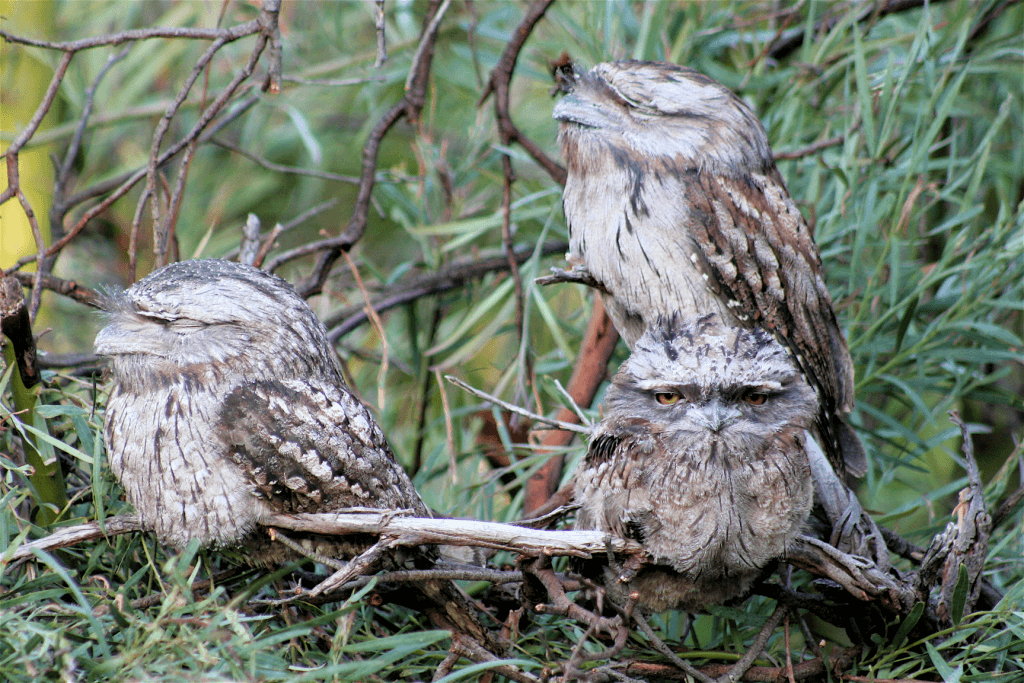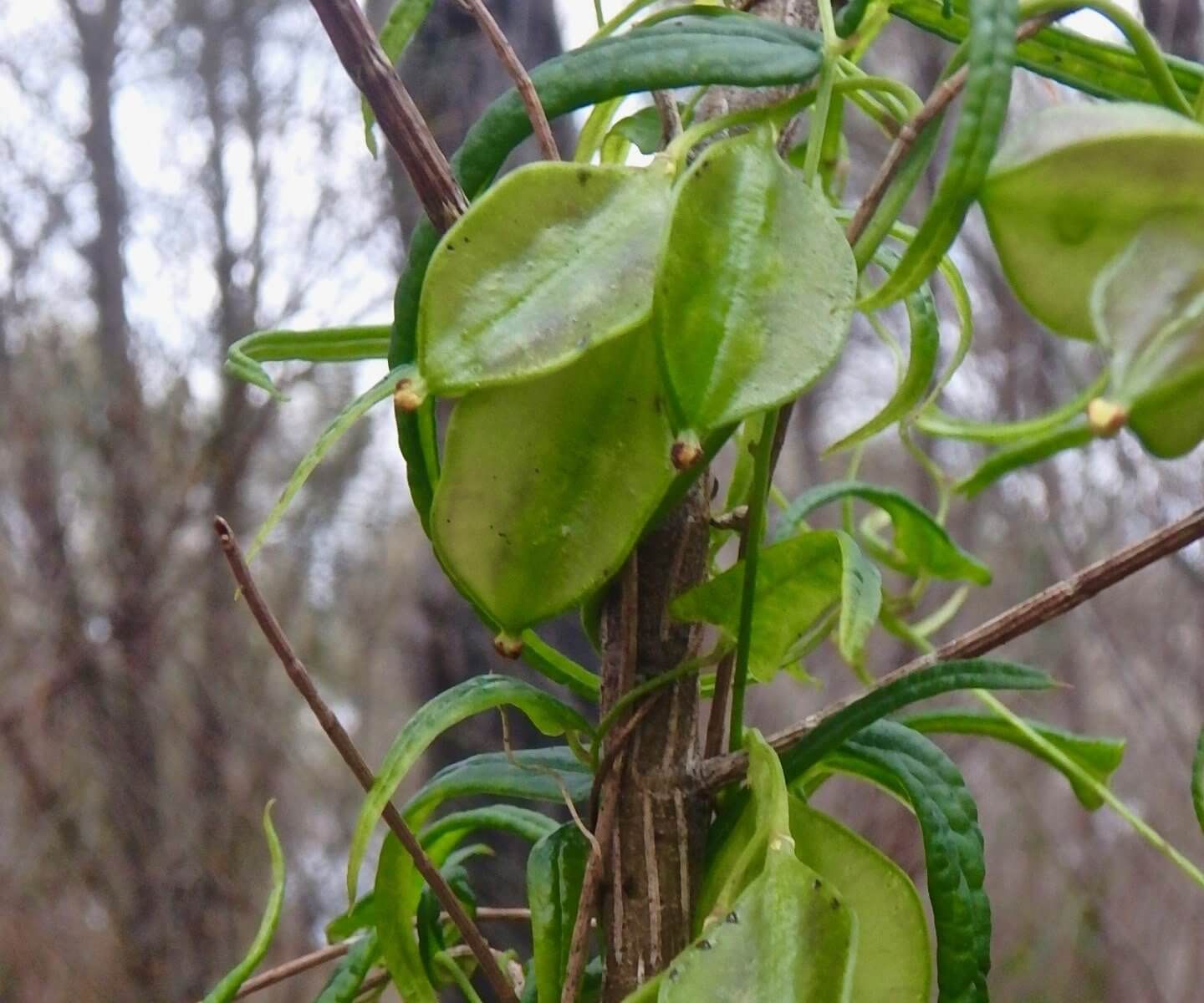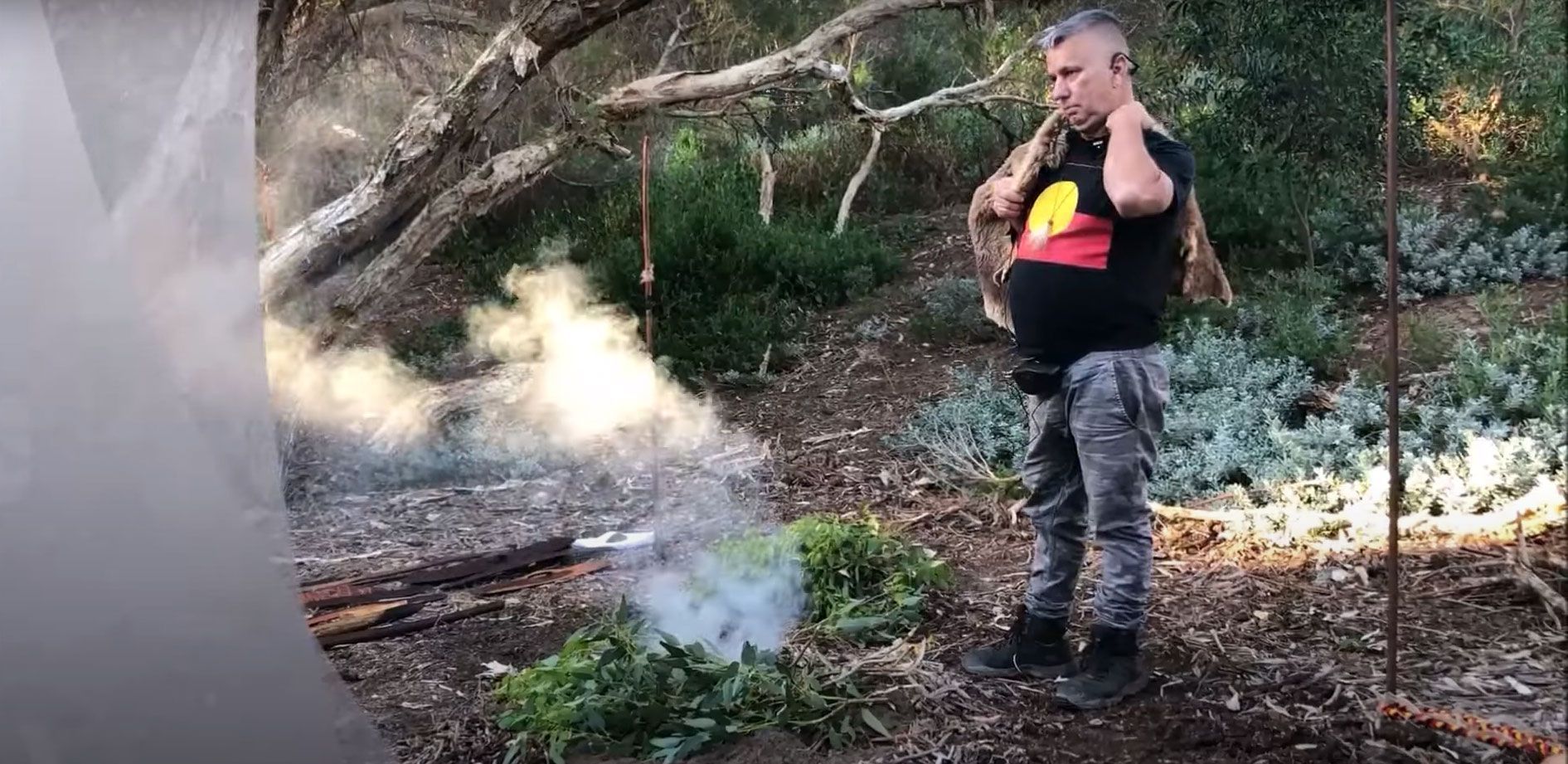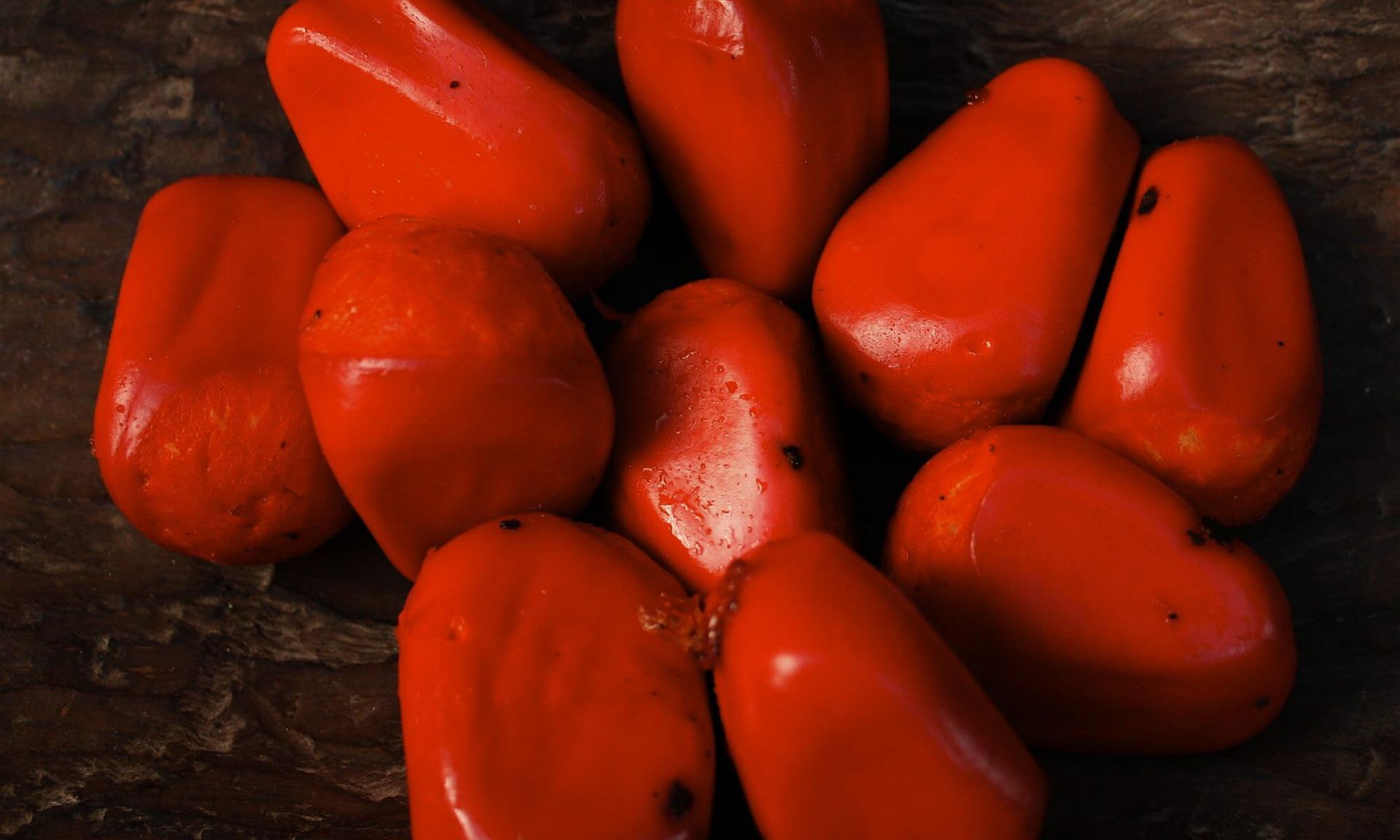Owl Beliefs in Nyungar Culture
Prepared by Ken Macintyre and Barb Dobson
Overview
This paper attempts to provide an insight into Nyungar (also spelt Noongar, Nyungah, or Nyoongar) views on owls and other night birds in traditional and contemporary times. The mythology associated with the owl and the supernatural powers that have been attributed to this iconic bird of the night, and in some cases still to this day, are highlighted. Traditionally associated with the dark totem, the owl was believed to be a totemic familiar of the ‘boylya-man’ or sorcerer (”clever man”) and the darkness of night was perceived as a dangerous time when ghosts and supernatural spirits were ever-present.
This paper is based on ethno-historical sources and contemporary information provided by Nyungar Elders between 1990 and 2010. It is an excerpt, with a few minor changes, from a larger report by Macintyre and Dobson (2009) focusing on the cultural significance of the “owl stone” megalith at Red Hill, north-east of Perth.
See https://anthropologyfromtheshed.com/report-owl-stone-aboriginal-site-red-hill-northeast-perth/
The ‘owl stone’ (also known as ‘owl rock’) is a prominent standing stone that forms an important part of a larger ethno-archaeological complex of sites of significance in the Perth Hills that are under threat from hard-rock quarrying activities. See https://www.anthropologyfromtheshed.com/aboriginal-sites-are-an-important-part-of-the-heritage-of-the-whole-community
The Boobook Owl (Gogomat)
The Southern Boobook Owl (Ninox novaeseelandiae), the smallest native owl in Australia, is known to Nyungar people as gogomat (or its variant renditions gogoomit, googoomit, gugumit, gugurda, kukumat or woroongul. It belongs to the genus Ninox or ‘hawk owls’ owing to its sharp-hooked beak and its characteristic hawk-like predatory behaviour. In southwestern Australia it is commonly referred to as the boobook owl or kukumat (see Plates 1-3). Each of these terms reflects the indigenous onomatopoeic representation of the bird’s familiar two-tonal call. The term boobook (or bubuk, also buc-buc) derives from the Aboriginal language of the Sydney region (Troy 1994: 69). It is also claimed as originating from the Wiradjuri language of Victoria where it is rendered as buc-buc. In view of its onomatopoeic origins, it could easily originate from more than one Aboriginal language.
The boobook is sometimes referred to as the little brown owl owing to its mottled brown plumage (see Plates 1-3). The Nyungar name for this owl derives from the root word gogo (gurgur, goorgoor) which is an onomatopoeic representation of the bird’s cuckoo-like night call. The earliest Nyungar terms recorded for this owl are gogomat (Moore 1835), gugumit, (Armstrong 1836, Moore 1842:30), googoomit (Grey 1840:43) and gurgurda (Moore 1842: 33). These terms are described below:
‘The night bird, which the settlers call the cuckoo, (and the natives “gogoomit” or “woroongul,” (Armstrong 1836 in Green 1979: 188)
‘goo-goo-mit – a species of bird, the note of which resembles that of a cuckoo’ (Grey 1840: 43)
‘gugumit – A small brown owl, the note of which resembles the cuckoo when heard at a distance.’ (Moore 1842: 30)
‘gurgurda – Strix. Little brown or cuckoo owl.’ (Moore 1842: 33)
‘gurgurda – boobook owl’ (Serventy & Whittell 1948 in Bindon & Chadwick 1992:66)
It may be seen that these terms, including Drummond’s (1836) reference to goolgoil (owl), all derive from the same root word gogo (variously rendered as googoo, gurgur and goorgoor) which is onomatopoeic, representing an imitation of the bird’s own call. As one Elder commented: ‘We say that the bird calls its own name’.
The name “gogo” (and its various renditions) is remarkably similar to the names recorded in other parts of Aboriginal Australia for the boobook (or mopoke). Some of these include kokok in the Keramin and Yorta Yorta languages of Victoria and kwerrkwerrke ‘named for its call’ in the Eastern Arrernte language, Alice Springs (Thieberger and McGregor 1994, Brough Smyth 1878).
In recognizing the different phonetic renderings of the various Nyungar terms (and their derivatives) collected by the different recorders, it is worth noting that Drummond’s attempted pronunciation and spelling of Nyungar terms was undoubtedly heavily influenced by Scottish linguistic convention, just as the other language recorders were heavily constrained by their own respective ethno-linguistic backgrounds and orthographic traditions (see Macintyre and Dobson 2008).
Owls and the supernatural: Ethno-historical background
Early ethno-historical references by Armstrong (1836) and Bunbury (1836) confirm that owls were greatly feared and were believed to be associated with malevolent spirits.
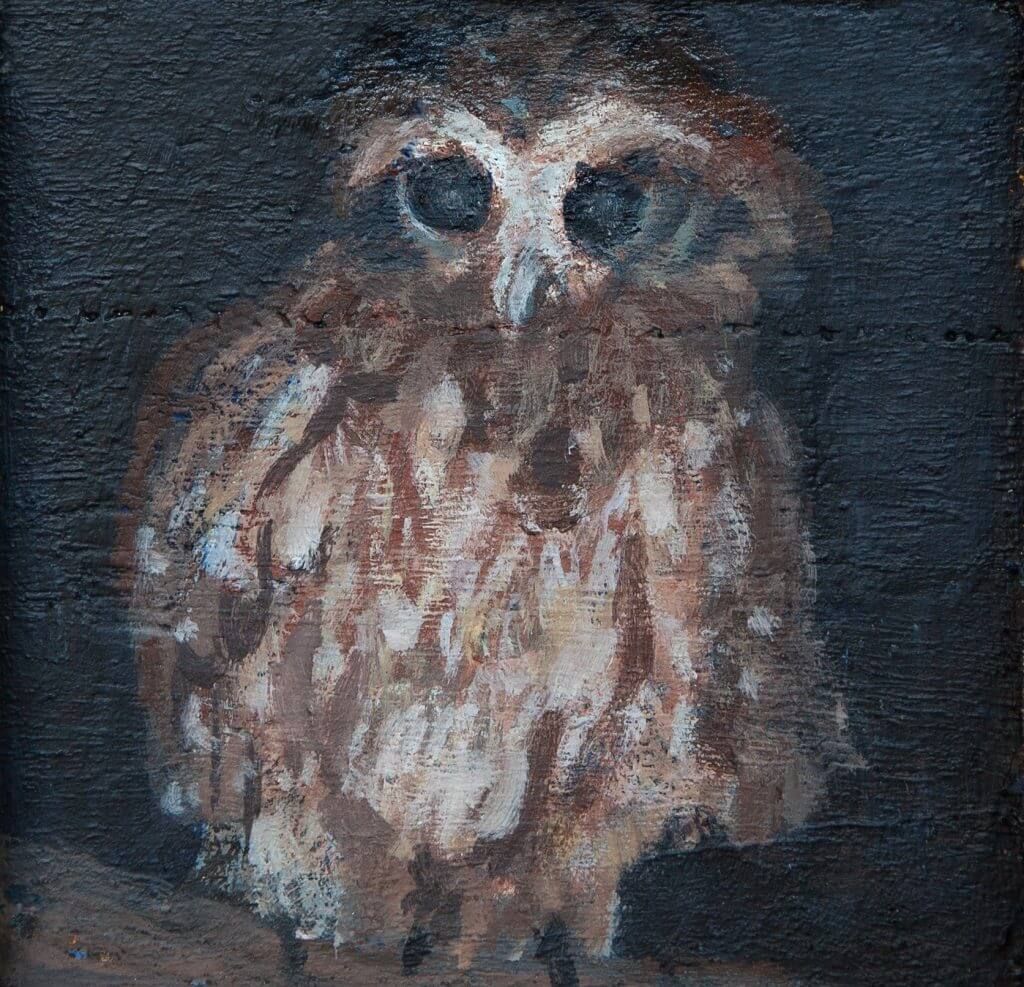
In 1836 Armstrong, the official Native Interpreter (cited in Green 1979: 188) refers to the owl as an agent of sickness and fear in Nyungar culture:
‘The night bird, which the settlers call the cuckoo, (and the natives “gogoomit” or “woroongul,”) is regarded by the latter as the cause of all boils and eruptions on their bodies, which they believe it to produce by piercing them with its beak, in the night-time, while they are asleep.’
Ogle (1839: 60) further notes that the Aborigines of the Perth and surrounding area ‘consider that the cry of the night-cuckoo portends death.’ Our research shows that the affix ‘mit’ means “agent’, hence googomit (“gogoo”, owl + “mit”, agent) may be translated as the owl being a much-feared ‘agent’ of sickness and death. The owl may also have been an “agent” of some other malevolent force, even a human one, for example, a bulya man, that is, a “clever man” or sorcerer (see section on “assistant totemism”).
Bunbury (1930), when travelling between the Murray River and the Vasse in 1836, describes Nyungar beliefs about predatory night birds as follows:
‘They [Aborigines] would not dare, it is true, under any circumstances to move at night without a firestick, except on a very clear moon-light night, for fear of the ‘Granga’ or evil spirits, or Ghosts, and also of the ‘Wow’, a bird of the genus Podargus, or Hawk Goatsucker, which flies by night uttering a note extremely like our Cuckoo and of which the Natives stand in great awe, ascribing to his malice any pains they may suffer at night, cramps, boils, or tumours. When they hear him they cover themselves as well as they can with their cloaks and crouch close to the fire, which they will on no account leave whilst their enemy is in the neighbourhood; but they will not for a moment scruple to eat him if they catch him by day.’ (Bunbury 1930: 76) (4)
It is unclear whether Bunbury is referring here to the tawny frogmouth (Podargus strigoides) or the Southern Boobook (Ninox novaeseelandiae). His reference to the cuckoo-like call of the bird would suggest that he is confusing the tawny frogmouth (Podargus) with the Southern Boobook (Ninox) which was often referred to by early recorders as the “cuckoo owl” owing to its call which strongly resembled that of the English cuckoo (Moore 1842: 33). It is often difficult to establish which species or genus of night birds the early settlers were recording because they were not trained ornithologists and the common names which they used (such as cuckoo owl, night cuckoo, night hawk, hawk goatsucker and mopoke) often lacked specificity. For this reason we have used the terms owl and mopoke rather loosely in this paper to accommodate these often vague references.
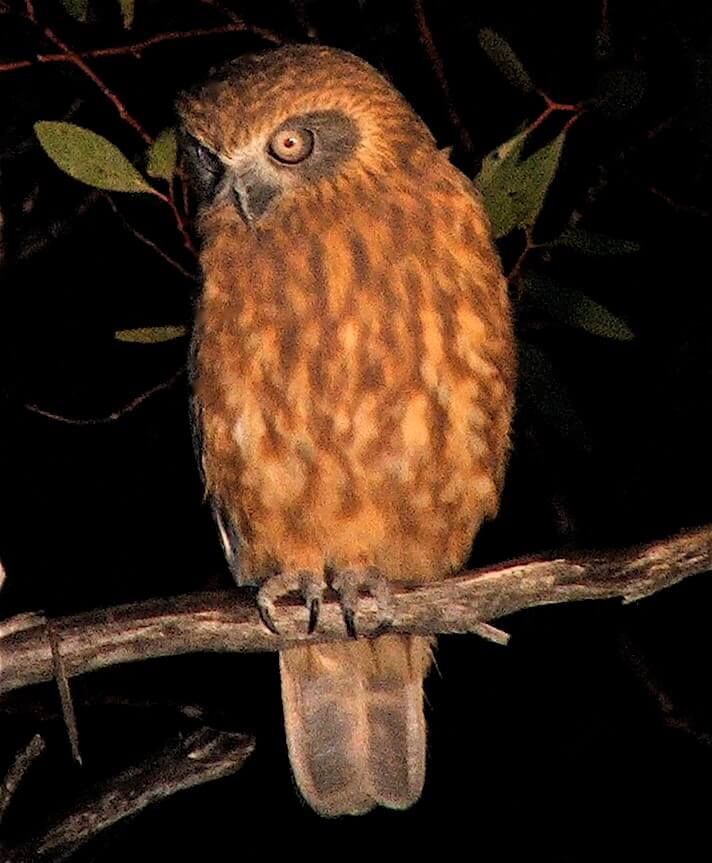
Confusion between the Boobook Owl and the Tawny Frogmouth
Not only did the early European settlers sometimes record night birds as simply ‘cuckoo’, “night cuckoo”, “cuckoo owl” or ‘hawk goatsucker’ without specifying which species or genus of night bird they were referring to, some added to the confusion by using the term “mopoke” without specifying whether they were referring to the boobook owl (Ninox novaeseelandiae) (see Plates 1-3) or the tawny frogmouth (Podargus strigoides) (see Plates 4-5) or other night bird.
The term mopoke generally nowadays only refers to the boobook owl, although historical sources have used the term mopoke to refer as well to the tawny frogmouth. There is often confusion among laypeople as to the differences between these two night birds. All birds have a repertoire of sounds that they produce, depending on situational contexts, such as whether they are mating, breeding, feeding or feeling distressed. It is easy to identify the typical sound of the frogmouth, a repetitive “oom-oom-oom” from the sound of the boobook, variously interpreted as googoo or kuku (Nyungar), buc-buc, boobook (Sydney Aboriginal groups) or mopoak (mopoke). Things can become complicated, however, when ornithologists such as Serventy and Whittell (1976) allude to the practice of bird mimicry and give the example of the tawny frogmouth imitating the mopok call of the boobook owl!
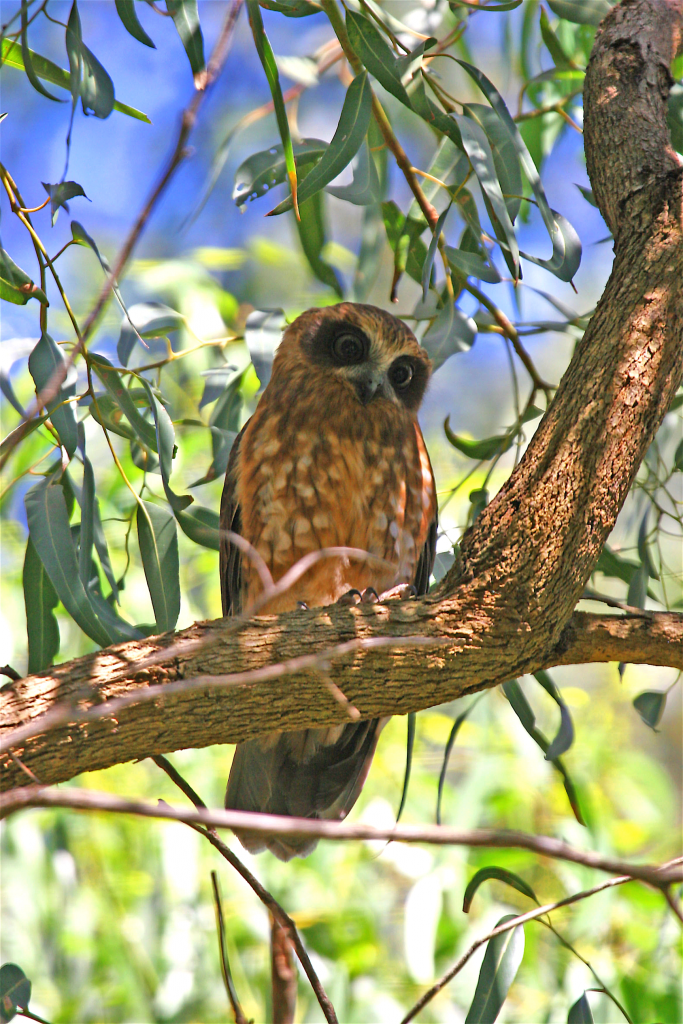
The origin of the term mopoke, and whether it derives from an Aboriginal or non-Aboriginal language, is uncertain. Interestingly, Von Brandenstein (1979: 15), who specializes in the Nyungar language, translates mopoke (or what he records as ‘maup-puaqq’ or mawp, skin + poaak, cloak) as literally “bark-cloak”, “skin-cloak” or “cloak skin”, thus implying a Nyungar origin for the term (mawp-poaak).
Although von Brandenstein applies this ‘bark-cloak” descriptor to the Southern Boobook owl (Ninox boobook Latham 1801), it would also aptly describe the remarkable bark-like or tree limb-like camouflage of the tawny frogmouth (see Plates 4 and 5).
Von Brandenstein’s (1979) ‘bark-cloak’ translation could possibly call into question the popular notion of mopoke as an onomatopoeic term, if indeed it is a Nyungar term. Whatever its origins, it would seem that the term ‘mopoke’ may be a collective rather than a species-specific reference, especially among non-ornithological trained persons (some of whom) apply the term to one or both night birds on the basis of a perceived resemblance in their “mopoke” or “more-pork”-like calls.
If the term is Nyungar-derived, it could denote a generic reference to both the boobook and the tawny frogmouth and potentially other nocturnal predatory birds, such as the nightjars and owlet-nightjars which exhibit bark-like colouring and camouflage also essential to their survival. If we consider ornitho-taxonomy (how birds are classified) from an indigenous perspective rather than from a Western Linnaean perspective, it becomes apparent that the Nyungar system reflects a greater emphasis on practical as well as cultural and mythological considerations.
In the case of night birds, it is not surprising that similarities in perceived bird behaviour and the culturally perceived consequences of this behaviour are considered more important in indigenous taxonomy than say physiological or structural biological similarities. Thus the Western-based Linnaean system may be of limited usefulness when trying to understand traditional ornitho-taxonomy in Nyungar culture.
The Southern Boobook Owl and Tawny Frogmouth have a number of attributes and behaviours in common. These include their size and shape, silent flight, powerful night vision, much feared status as agents of the supernatural, sickness and death, and their reputed (and disputed) similarities of calls, especially their alarm and distress calls. The usual calls of these birds are easily distinguished (the “oom-oom-oom” sound of the tawny frogmouth versus the go-go (or goo-goo) of the boobook owl). However, both birds have a repertoire of vocal sounds and occasionally these may be heard to overlap, that is, when the frogmouth on occasion imitates the mopok sound of the boobook. This is known as bird mimicry.
Even to this day there is considerable confusion in contemporary Nyungar society when individuals recount stories and incidents involving these much-feared night birds. It is often hard to distinguish in the stories whether it is an owl or a tawny frogmouth (or possibly even an owlet-nightjar or nightjar) that is being referred to. What is most noticeable in the stories, however, is the common dread of the nocturnal calls of these birds and their foreboding consequences.
It is our contention that owls, tawny frogmouths and other related night birds (such as nightjars and owlet-nightjars) were probably all traditionally categorized into a group or class of bird known as winnaitch referring to night birds, spirits of the night or warra (bad). This taxonomic classification would have applied across genera to a number of birds displaying the same nocturnal (or crepuscular, meaning dawn and dusk) behaviours along with their deep mythological associations with dangerous supernatural beings.
The avoidance of revealing totemic names of feared night birds or spirits may explain why the actual bird name was not collected by Western recorders. For example, Ethel Hassell documented cubine (or coubourne, meaning ‘totem’) for mopoke and buitch (meaning ‘stone’) for what would appear to be the tawny frogmouth. Cubine and buitch are emic descriptors (describing the bird’s significance from the insider’s viewpoint) rather than indicating species’ names. The real totemic names would have been kept secret and only used by the senior initiated custodians of that totem. The names would have been used at special rituals and ceremonies involving increase rites and totemic propitiations. Even if the name was known, it would not have been uttered outside of the ceremonial context for fear that it may call forth, or offend in some way, the totem spirit and potentially bring a negative effect upon the individual or group.
The Fear of Owls in Nyungar Culture: Contemporary Accounts
‘In Nyungar Culture the Googoo or Boobook Owl is a frightening messenger of death.
When the Nyungar Elders who were consulted about the ‘owl stone’ site at Red Hill were asked by anthropologists Macintyre and Dobson in 2008 and 2009 if they knew of any stories or myths about owls, they recounted a number of stories told to them in their childhood by parents and other relatives. Their verbatim accounts, presented below, illustrate their culturally deep-seated fear of night birds, especially the owl or mopoke:
‘We Nyungars have always been frightened of owls because they are night birds and are associated with evil spirits. When camping in the bush as kids, our parents were always terrified if they heard an owl at night. The old people would want to kill it because they said if you don’t kill it first before it kills you, someone will die. They were very scared.’
‘I remember the “old people” telling us when we were kids that on still nights when they were sitting around the campfire, they would freeze in terror at the sound of the mopoke because that bird could see you, could hear you and could fly without making a sound. They believed that it was like a spirit in the night and could do bad things to you.’
‘”The old people” called them night hawks because you could hear the squeals of the mice as they swooped on them and scooped them up in their claws. These night sounds really scared them.
”The old fellas” used to respect the owl and teach young children not to misbehave or go walking around at night-time. They used to tell scary stories.’
‘When we were kids we were so scared at night, we didn’t look around, we just hid under the blanket and didn’t move a muscle.’
‘I remember my parents telling me the worse thing that can happen is to hear the call of an owl because that was a sign that someone would die, unless you found that bird and killed it before it killed you.’
‘We were always told to watch out and to hide and be still if you ever heard the mopoke cry out, because this was a spirit bird which could see you in the night. Even in the day time my parents told me never to harm an owl…. they were dangerous.’
‘I remember an old story that my father told me that boylya men [witchdoctors, sorcerers] would turn into owls at night time and chase after a person they had a grudge for and when they found them they’d put a magic curse on them while they were asleep and they would die the next day.’
‘The old people would tell stories that if you did anything wrong at night the owl would see you and would tell a boylya who could speak owl language and he would come after you and punish you. You think that people can’t see you in the dark, but the owl people can see you.’
‘There’s an old story that my grandmother used to tell me that certain boylya men can turn into owls and if someone broke the law or did something bad, the owl would come and get you at night while you were sleeping, and put a yumpa [magic curse] on you.
‘It’s a winnaitch bird, You can’t hurt them or kill them. If you try to do this you might stir up bad spirits.’
‘If you see an owl in the day time, you don’t need to be frightened because it’s only in the night time when it gets its power. Don’t get me wrong, owls are not all bad. If you know the rituals and the stories for the place, they [the owl] will help you, like all our other ancestors supplying us with food, water and shelter.
‘The one bird that Nyungahs fear is the goombagarri [mopoke]. It’s a warra [bad] bird. When you hear that bird at night, it is an omen. You must find it, kill it and burn it, but it’s hard to find because it is the same colour as the bark of the tree. If that bird can sing and get away with it, it’s a death omen, it means someone will die.’
Although there are certain inconsistencies in the above sentiments (for example, whether to kill the omen bird or to leave it alone for fear of reprisal), this is not uncommon when collecting oral narratives in any culture. In fact such contradictions typically constitute the raw fabric of ethnographic analysis.
These contrary views as to whether to kill the owl or not, may stem from a possible confusion between the different night birds being referred to or more likely (in our view) the views may simply represent two different indigenous ways of resolving the same problem – by either avoiding or killing the manifest agent of their fear. What these views have in common is that they reflect the culturally ingrained and deep-seated fears held (even to this day) by senior Nyungar Elders relating to the destructive powers attributed to owls (or mopokes) in Nyungar culture. This fear of owls and their assumed destructive powers is widespread throughout many cultures of the world.
‘It was like a spirit in the night and could do bad (warra) things to you.’
It is interesting to note that the contemporary Nyungar views of owls, mopokes and frogmouths as ‘winnaitch’, ‘wanitch’ or ‘warra’ (bad) are consistent with traditional views of these birds as ‘youanitch’ (Hassell 1894).
Hassell (1890’s) records the name of the tawny frogmouth as youanitch. What she was in fact recording (most probably without realising it) was an emic descriptor signifying danger rather than the actual name of the bird. Youanitch can mean ghost, death, evil spirit, forbidden, taboo or danger. Similarly, Gray (1987 in Bindon 1992) records youanitch as the name for owl. Based on early ethno-historical accounts it would seem that owls and tawny frogmouths (and possibly other night birds as well) were considered youanitch (also rendered as wannaitch, winnaitch, wynitch, weinitch, depending on the recorder) and this view is still held by some Nyungar Elders even to this day. (See Macintyre and Dobson 2009 Appendix 4).
Winged Familiars – ‘Assistant Totemism’
It is not uncommon to hear stories of how certain bulya or ‘clever’ men were believed to have the ability to transform themselves into a night bird such as the owl or mopoke and under this guise were able to watch over and ‘police’ campsites at night time to ensure that the inhabitants were safe from intruders, and also to act as a deterrent against young men becoming involved in sexual transgressions prior to initiation, or breaking the incest taboo. Culturally, the owl may be viewed as an agent of social control in that it is able to fly silently throughout the night, and aided by its powerful, penetrating night vision, is able to watch over people’s night time activities and then report back to the ‘clever man’ to whom it is considered a type of “familiar spirit” (Macintyre 1990 unpublished field notes).
The notion of the owl as a winged “familiar” is important in Nyungar culture. It fits neatly into Elkin’s category of “assistant totemism” which he distinguishes as follows:
‘In most parts of Australia, the medicine man stands in a special relation to one natural species, usually an animal or reptile which acts as his assistant, going forth either to work his will either for good or ill on the patient or victim, or to gather information from a distance. This variety of totemism, which is individual in form, is most strongly developed in eastern Australia, but the possession of similar “familiars” is also characteristic of the medicine-men of north-western Australia. Such totems and “familiars” are both within and without the individual. They are like a second self or spirit, and yet they are also externalized in the species, and may be exhibited in a tamed member of it. The lace lizards and certain snakes are the commonest varieties of assistant totems.
This totem is usually given by medicine-men and generally only to persons who are destined, or desire, to be magical practitioners….In southeastern Australia, at least, assistant totemism is akin to social totemism; the totemite does not eat his totem; indeed an injury to the latter will entail injury to him; and for its part, the totem assists and and guards the individual. It should also be noticed that the social totem and the dream totem are often believed to guard and warn the totemite and even to help him to recover from illness. But the element of positive assistance in the performance of one’s work or calling is not present; this seems to be limited to the profession of medicine-men and the workers of magic, and so requires a subdivision for itself, namely, assistant totemism. ‘ (Elkin 1948: 148-149)
Macintyre (1975) in his unpublished field notes relating to the north-eastern Goldfields records a mabanjarra (‘clever man’) having a ‘spirit familiar’ located in his abdomen. This was said to be in the form of a snake and was referred to in kinship terms as ‘father’.
In southwestern Australia certain birds such as the mopoke and the crow (both of which belonged to the ‘dark’ side of the Nyungar moiety system) were the winged familiars of the boylya (also bulya, medicine men, ‘clever men’, sorcerers). The noiseless flight of the owl (made possible by a specialized aerodynamic wing feather structure which functions as an important evolutionary, nocturnal hunting device) no doubt appealed to these ‘clever men’ as it enabled them to find an agent or vehicle by which they could spy upon or surprise their victims while they were sleeping. By adorning themselves with the soft primary wing feathers of the mopoke, it was believed that this enabled them to acquire the powerful qualities of this top predator bird including its strong, penetrating night vision and swiftness of flight and agility in catching victims unaware.
One Nyungar Elder recounted a story (told to him when he was much younger) about an old Nyungar boylya man who lived in the Wheatbelt region, east of Perth:
‘He was a great doctor and could fix everyone but they were all terrified of him because he seemed to know everything they were doing and they believed that he turned into an owl at night and flew around to all the camps watching everything and making sure that no one broke the law.’
In this story the ‘clever man’ was perceived as having the supernatural powers to transform himself between human and bird. This duality is a common theme portrayed in Nyungar mythology.
Another story which was told to us alluded to the same transformational powers of a ‘clever man’ and the mopoke as his “agent’. However, this story was different. It depicted the “mopoke” as a healing agent (rather than a destructive force) thus symbolizing, what can only be described here as, the miraculous healing powers of the boylya (or buylya, bulya) in the guise of a mopoke.
This story was recounted by a Nyungar Elder who described a true story which he had heard about a young Nyungar boy who had been involved in an accident with a horse-and-cart. For some unknown reason the cart ran over the boy and as a result he was seriously injured. He was taken to hospital but the doctors said that there was nothing they could do to help him and that his parents should take him home to die. However, his mother’s Elder sister knew of a “clever man” (boylya man) who lived in another district. Through a relative they contacted this man who told them not to worry and he said that he would visit the young boy just after midnight (that same night) in the guise of a mopoke. He said he would call a number of times and then fly away.
The next morning the young boy regained consciousness and began to talk and asked for some food. No one in the camp doubted that the boylya man had visited the boy during the night. Even to the time of his death (only ten years ago) this man had the scars on his face and body to prove his close encounter with death.
The boylya man was perceived as transferring his magical healing powers through the mopoke. This is an example of ‘good’ sorcery, whereas in most of the stories reported to us, the owl or mopoke was perceived as a destructive force or evil ‘spirit familiar’ of the sorcerer. Interestingly, there are cultural parallels found outside Aboriginal Australia where owls are similarly associated with indigenous shamans or sorcerers. For example, Werness et al (2001: 306) point out:
‘Among many Native North Americans, the owl was especially closely tied to the shaman. Eskimo masks depict owl spirits; possibly the inua (animal other) of the shaman.’ (Werness et al 2001: 306).
The association of owls with the supernatural is found throughout the world, including Asia.
Owl totemism and the supernatural
Hassell’s (1934, 1935, 1936, 1975) work demonstrates how totemism involving the mopoke was not only restricted to the human realm but also existed among supernatural ghosts and demons, known as jannock or janga. These jannock were sometimes believed to have totems which were “familiar” in nature and which gave the spirit (at least in the case of Gnolum as described by Hassell) enhanced nocturnal powers for seeking out those young males who dared to wander away from their campfires at night. Hassell (1975) describes a nocturnal jannock (demon spirit) known as Gnolum who frequents the forests in the lower southern part of Western Australia. It is clear from her description that this spirit is indeed the predatory ‘mopoak’ (sic.) which is described as:
‘a very tall, thin spirit or jannock with a long thin beard. A member of the cubine [mopoke] totem. Wears no clothing except cubine feathers stuck all over the head.’ (Hassell quoted by Davidson 1935:277)
In a separate publication Hassell (1975: 65) describes gnolum as a “man”:
‘the form of a very tall, very thin man…[who] wore no garments of any kind but has his totem feathers stuck all over his head and they are those of the mopoke.’
It seems clear from Hassell’s description that this spirit (or man) known as Gnolum is attempting to emulate the nocturnal behaviour of his totem, the mopoke. Gnolum is said to lure young boys by enticing them with the sweet-tasting root of the mungah (reported to be Nuytsia floribunda) or sometimes the bardi (Hassell 1975).
It is difficult to ascertain whether Hassell misunderstood her informants’ use of metaphor in trying to convey to her that Gnolum’s totem was a “familiar” or “assistant” which gave him enhanced powers of strong vision, acute hearing and noiseless flight in the night – attributes which are associated with his totem.
It would seem that Gnolum was an awesome “boogey man (or spirit)” who in anthropological terms may be seen as performing an important social control function prohibiting young boys from getting into mischief at night time.
It is interesting to note that Douglas (1976: 66-67) refers to a ‘night hawk’ known as nyurlam which he describes as a ‘devil woman’ or ‘female ghost.’ This may be the female equivalent of gnolum as both perform frightening functions and may be viewed as agents of social control. According to Douglas (1976: 67), the fear of nyurlam is used to prevent children from eating the sticky gum and climbing the brittle branches of the Nuytsia floribunda (Christmas tree).
ACKNOWLEDGEMENTS
Macintyre and Dobson wish to acknowledge and thank members of the Combined Swan River and Swan Coastal Plains and Darling Ranges Nyungah Elders, Native Title Claimants and Traditional Owners who have assisted in the production of this paper by sharing their views and stories on owls and night birds in Nyungar culture for the benefit and understanding of all Nyungar and non-Nyungar people.
We would like to thank the members of Birds Australia (Birdlife Australia) and Birdlife Western Australia who kindly provided photographs for this paper.

